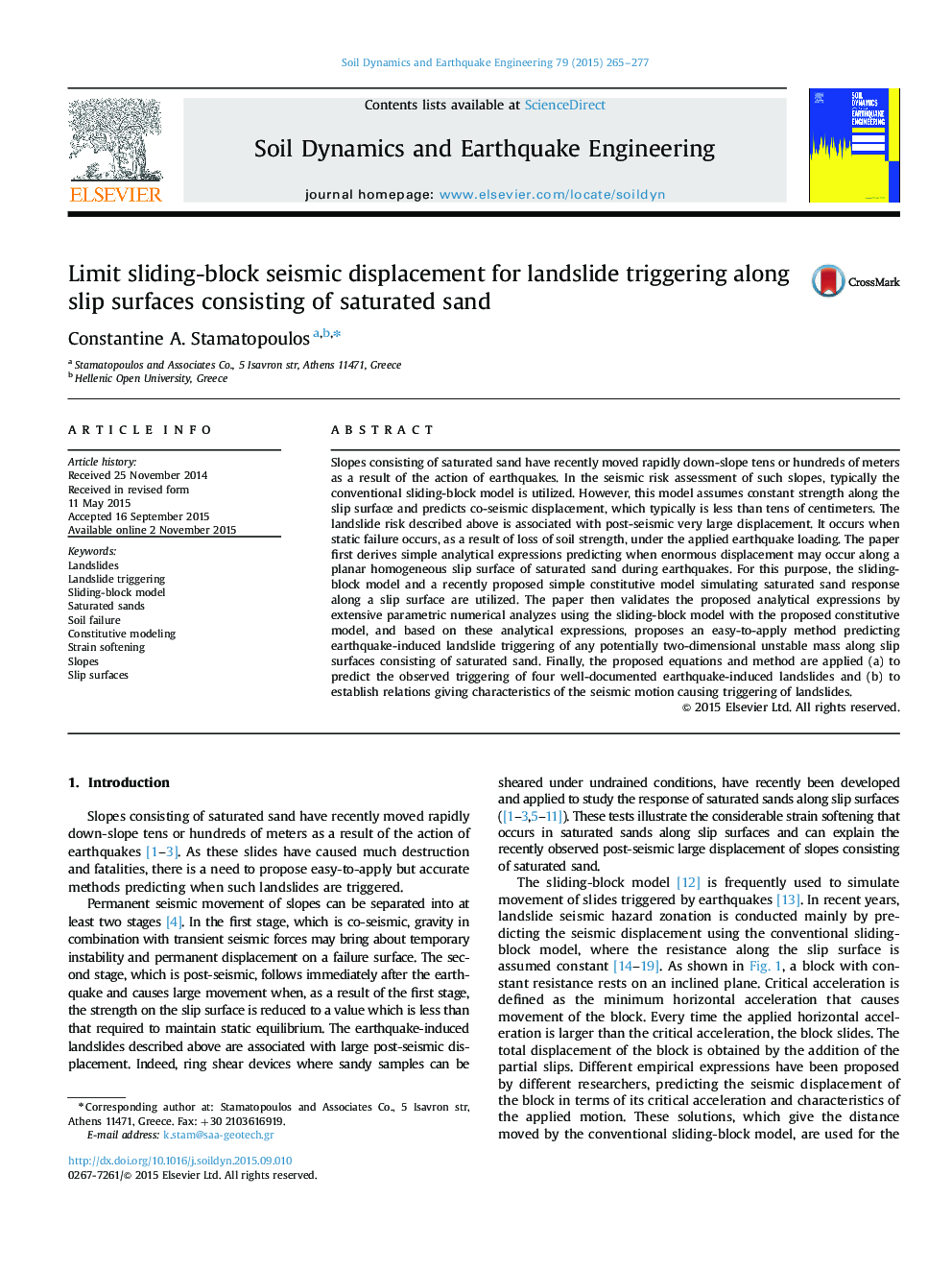| Article ID | Journal | Published Year | Pages | File Type |
|---|---|---|---|---|
| 304009 | Soil Dynamics and Earthquake Engineering | 2015 | 13 Pages |
•An equation predicting when enormous seismic displacement occurs is derived.•It is based on the sliding-block model and a recently proposed constitutive model.•Based on this, a method is proposed to predict when landslide triggering along any slip surface occurs.•The method was applied successfully in four well-documented earthquake-induced slides.
Slopes consisting of saturated sand have recently moved rapidly down-slope tens or hundreds of meters as a result of the action of earthquakes. In the seismic risk assessment of such slopes, typically the conventional sliding-block model is utilized. However, this model assumes constant strength along the slip surface and predicts co-seismic displacement, which typically is less than tens of centimeters. The landslide risk described above is associated with post-seismic very large displacement. It occurs when static failure occurs, as a result of loss of soil strength, under the applied earthquake loading. The paper first derives simple analytical expressions predicting when enormous displacement may occur along a planar homogeneous slip surface of saturated sand during earthquakes. For this purpose, the sliding-block model and a recently proposed simple constitutive model simulating saturated sand response along a slip surface are utilized. The paper then validates the proposed analytical expressions by extensive parametric numerical analyzes using the sliding-block model with the proposed constitutive model, and based on these analytical expressions, proposes an easy-to-apply method predicting earthquake-induced landslide triggering of any potentially two-dimensional unstable mass along slip surfaces consisting of saturated sand. Finally, the proposed equations and method are applied (a) to predict the observed triggering of four well-documented earthquake-induced landslides and (b) to establish relations giving characteristics of the seismic motion causing triggering of landslides.
